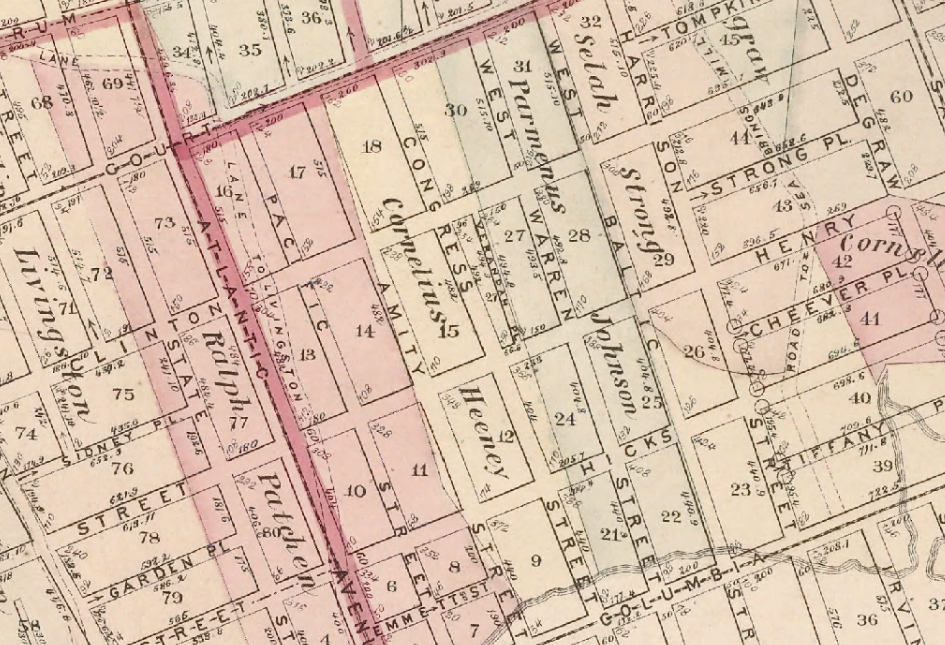
A gaunt, orange tabby cat, a tiny poodle, and a few hysterical children walk into a church… No, this is not the start of a bad bar joke, but it was the start of a comedy of errors that took place at St. Paul’s Roman Catholic Church in the Cobble Hill section of Brooklyn on May 2, 1897. According to The New York Times, “never before had such a commotion been raised in this church.”
It’s a short but sweet tale–and with an orange-haired tabby, an Irish church, and an Irish philanthropist, it’s a purrfect cat tale for St. Patrick’s Day.
On Sunday evening, Rev. Father William J. Hill, the church’s pastor, was assisting in a Rosary procession with 150 children and many church elders. The three aisles of the church were filled with the young boys and girls. The boys were dressed in their Sunday best. The girls were all wearing white dresses and veils.
As Father Hill and his two assistants stood at the alter, one of the boys started to light the candles. The church was as quiet as a mouse, for a benediction was just about to begin.
Suddenly, a cat sprang out from under one of the altar chairs, frightening all in attendance. The cat sprang toward the left aisle, landing squarely on the head of Miss Celia Ledger, tearing off her veil. Then the cat sped down the aisle and in between the children, causing them to scream and go into hysterics.
About mid-way down the aisle, an elderly woman was sitting with her poodle. The poodle was a regular attendant at St. Paul’s Church, as he had been the woman’s constant companion at mass for the past two years.
This poodle was normally a quiet dog that had never before uttered a sound in the church. But the sudden appearance of the cat brought him into action. In one little leap, he jumped over his mistress’s lap and landed in the aisle, barking and yelping and causing the children to go into further hysterics.
For several minutes, the cat raced up and down the aisles. Father Hill ordered several of the ushers to chase down the cat. A few older boys joined in the chase. Eventually, the cat took cover somewhere the humans could not reach her. So ended the chase and the chaos.
If you enjoyed this story, you may want to read about the cat family that lived in a church organ on Fulton Street.

A Brief History of St. Paul’s Church in Cobble Hill
The story of St. Paul’s Church in Brooklyn’s Cobble Hill neighborhood is an Irish one. That is, the story of this church begins with an Irish immigrant named Cornelius Heeney.
Born in Ireland in 1754, Heeney came to America at the age of 30. He became a naturalized citizen in 1807.
According to Francis Morrone, author of “An Architectural Guidebook to Brooklyn,” Heeney worked as a bookkeeper for the same Manhattan furrier that employed John Jacob Astor. When the furrier retired, he left the business to Heeney and Astor. The two men eventually split up, allowing Heeney to start his own fur trading business. It turned out to be a very lucrative business for him.
Following the great fire of Lower Manhattan in 1835, Heeney moved to present-day Cobble Hill, where he acquired farmland bounded by Court, Congress, Amity, and Columbia Streets. He built his home near the corner of Henry and Amity Streets.
Heeney was reportedly the first Catholic to hold public office in New York, serving five years in the New York State Assembly, from 1818-1822. It was during this time that Heeney met Andrew Morris, another Irish immigrant who served in the State Assembly. The two men would later purchase and then donate the land on which Basilica of St. Patrick’s Old Cathedral on Mulberry Street in Lower Manhattan was built.

Although Heeney was a bachelor, he took a keen interest in children, especially orphans. He was also devoted to the Catholic Church. Among his many philanthropic endeavors, Heeney donated land and money to the Roman Catholic Orphan Asylum and, along with the Astor family, founded the Brooklyn Benevolent Society.

In September 1836, Heeney donated a portion of his land for the site of a new Catholic church that had been proposed for residents living on the southwest side of Fulton Street. When the new St. Paul’s Church was built, it occupied a large field on the corner of Heeney’s farm, now the corner of Congress and Court Streets.
Dedication of the completed edifice took place on January 21, 1838, with the Bishop of the Diocese of New York, John DuBois, presiding. Less then ten years later, on May 3, 1848, Heeney passed away. His body was buried in the back garden of the church.


‘




Anytime a cat disturbs a church that’s just fine for me. Bravo little hero!